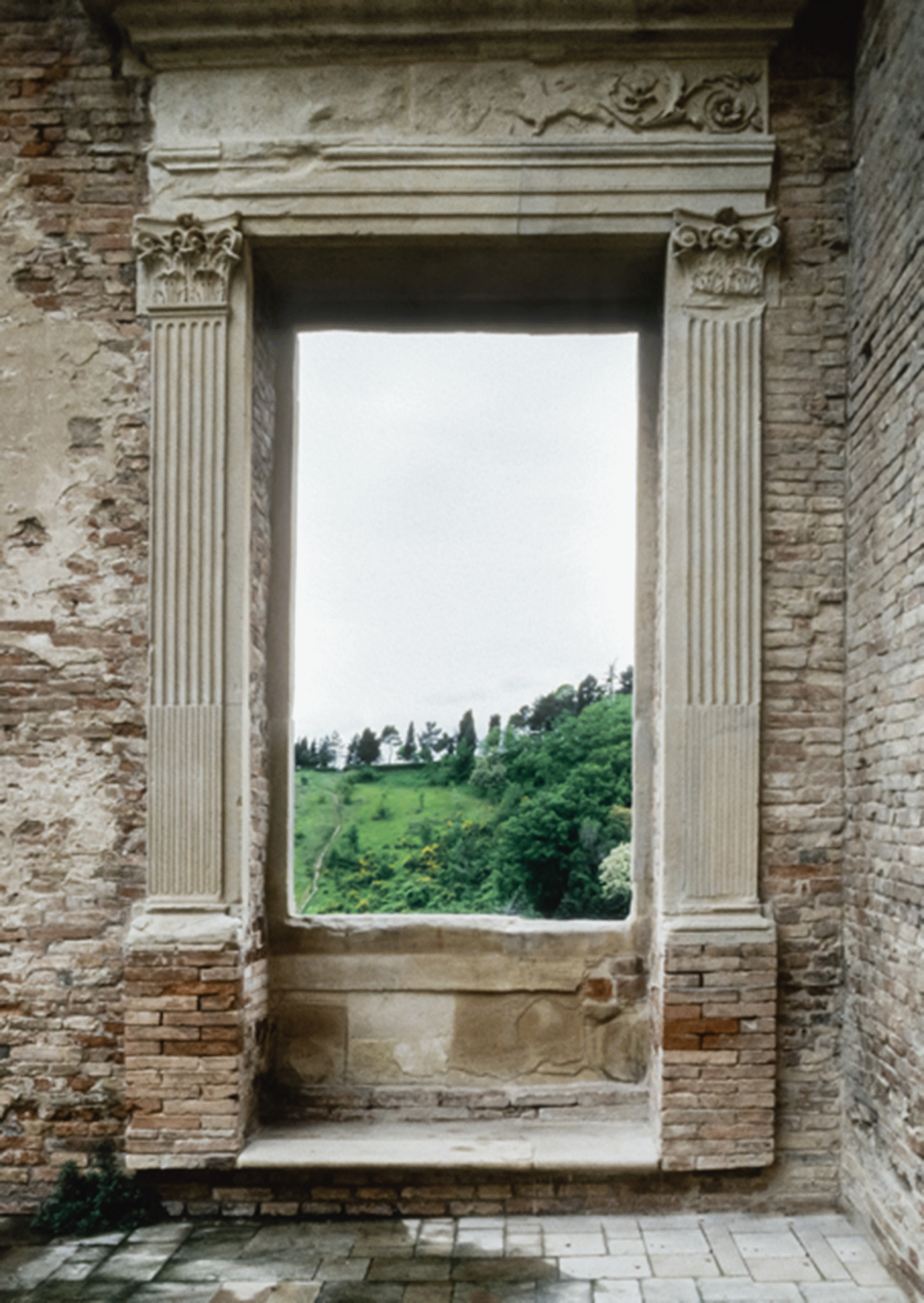Conferenza serale
Gerd Blum: The fenestra prospectiva as a Viewing Device and as an Architectural Reality: Ancient Authors, Alberti, and the "Window with a view" in the Ducal Palace at Urbino

Fruitful research has been done on the window as model and metaphor for Early Modern painting and for Early Modern image production in general. The implications and consequences of Leon Battista Alberti's famous definition of modern painting as illusion of an open, undivided window (1435/36) have been analyzed in important books by Edgerton, Freedberg and others. The window as motif in Early Modern paintings has also been analyzed in depth by Gottlieb and in more recent important studies, e.g. regarding Giovanni Bellini's Pala di Pesaro. Many exhibition catalogues deal with depictions of windows.
Last year I published the first ever monograph on built windows with a view and on vistas on land and 'landscape' as elements of built architecture in Early Modern Italy – a book on the theme of the window construct and its implicit view to set-piece 'landscapes'. Vistas across the land, the landscape, and the garden are a particular hallmark of the Italian villas and palaces in the early modern era. My lecture presents discourses on vistas of ideal places and on framed views during the Renaissance and highlights important aspects of Renaissance reconstructions of antique discourses on architecturally staged and framed views.
Making special reference to the architectural treatise of Alberti and to the Ducal Palace in Urbino, my lecture analyses the transformation of the ancient topos of the 'theatre of hills', and the creation of the new, early-modern paradigm of the ideal view framed by the rectangular, unpartitioned 'window with a vista'. I also reconstruct how the term 'fenestra prospectiva' was coined in the 16th Century.
Towards the end of that century the old, cosmological paradigm of the 'theatre of nature' is definitely superceeded by the view through an undivided rectangular window, confirming the shift to the new paradigm of the window as an image of the world.
Gerd Blum is Professor of the History of Art at the Academy of Fine Arts in Münster. He was Visiting Professor at the Universities of Heidelberg and Vienna and Visiting Scholar at the Institute for Advanced Study at the University of Konstanz and at Tongji University, Shanghai. Blum wrote a monograph on the painter and Deutsch-Römer Hans von Marées (d. 1887) and a biography of Giorgio Vasari. In 2010, Blum received the prize of the Aby-Warburg-Stiftung, Hamburg. He publishes on Early Modern Art and Historiography of Art, and on Visual Arts since the later 19th Century. His article "Vasari on the Jews. Canon, Conversion, and the Moses of Michelangelo" was recently published in the The Art Bulletin (2013). In 2015 he published his Habilitationsschrift "Fenestra Prospectiva. Architektonisch inszenierte Ausblicke: Alberti, Palladio, Agucchi" (Studien aus dem Warburg-Haus, vol. 15), Berlin and Boston: de Gruyter.
22 novembre 2016, ore 18:00
Kunsthistorisches Institut in Florenz
Max-Planck-Institut
Palazzo Grifoni Budini Gattai
Via dei Servi 51
50122 Firenze
Avviso
Questo evento viene documentato fotograficamente e/o attraverso riprese video. Qualora non dovesse essere d’accordo con l’utilizzo di immagini in cui potrebbe essere riconoscibile, da parte del Kunsthistorisches Institut in Florenz a scopo di documentazione degli eventi e di pubbliche relazioni (p.e. social media) la preghiamo gentilmente di comunicarcelo.


